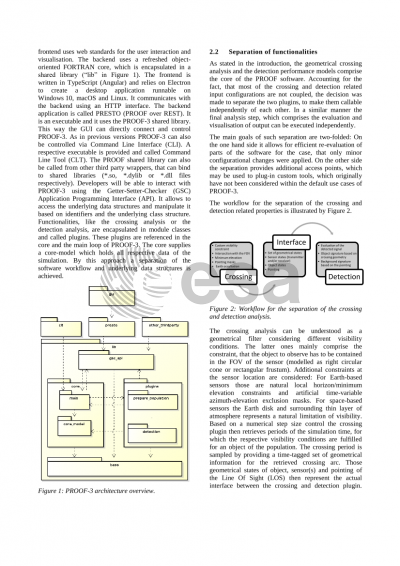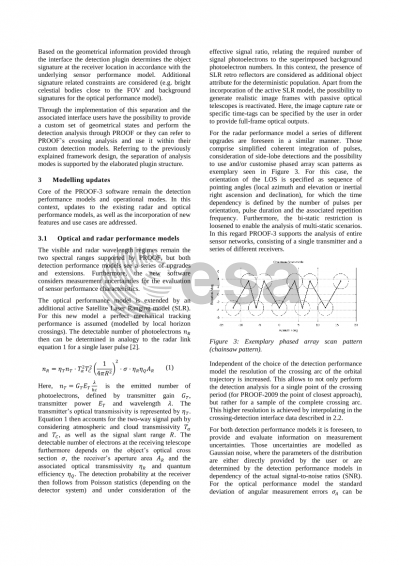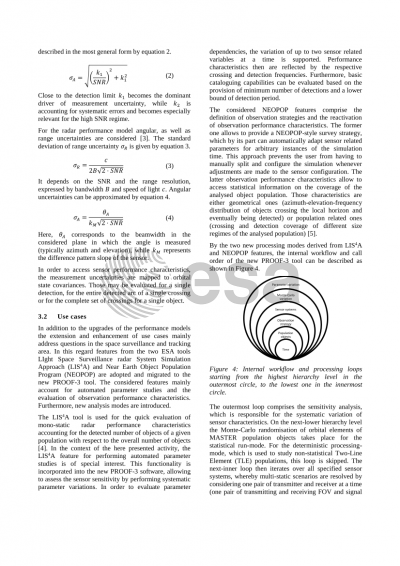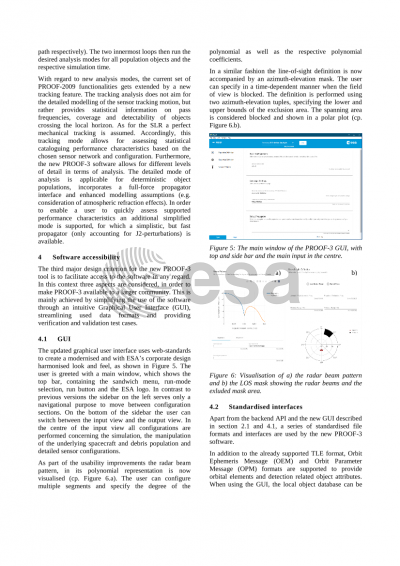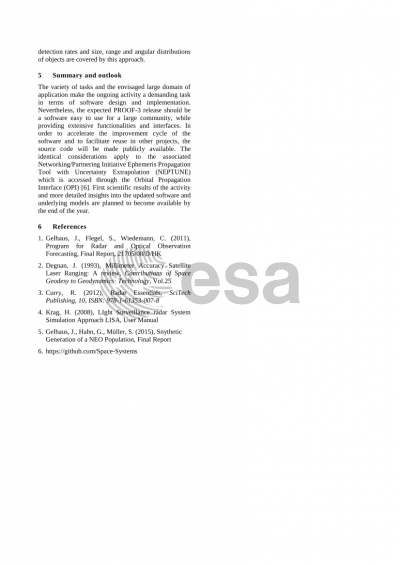Document details

Abstract
The PROOF software (Program for Radar and Optical Observation Forecasting) was developed to validate MASTER’s statistical space debris populations by comparing actual observation campaigns with simulated crossing and detection characteristics. The initial capabilities of PROOF did not only cover the conduction of observation validations, but also the simulation and analysis of basic observation model characteristics, as survey planning, sensor performance assessments and interpretation of observational data. Already providing those fundamental capabilities, the sphere of interest has shifted in recent years towards the assessment of design criteria and evaluation of overall performance within the domain of SST (Space Surveillance and Tracking) and cataloguing of the deterministic debris population. The process of enhancements and incorporation of new functionalities into the PROOF software was initialised and supported by ESA in the context of its Space Situational Awareness Programme. Likewise, it is envisaged to make PROOF available to a wider community by the incorporation of new features and the improvement of the tool itself.
In order to account for this augmentation of PROOF’s application domain, the current tool has to be enhanced with respect to incorporated models and accessibility of the software itself. Such demands led to re-implementing the entire tool to allow for maximal flexibility in the selection of models, interfaces and functionalities, as well as to consider new standards in software engineering. The updated models and the new design require an extensive verification and validation process, which incorporates actual observation data, as well as the comparison with existing software tools. In this paper, we provide a global overview of the current PROOF related activity and address initial results of the updating process. The latter points comprise the description of added features and functionalities, new software architecture, overall framework, as well as the implementation of external and graphical user interfaces. Additionally, an overview of model enhancements in the domain of passive optical, radar and active laser ranging sensors and networks under consideration of measurement uncertainties is given. The framework and model related updates do not only allow for a more detailed and sophisticated analysis, but equally enable new use cases of the software, which by their part allow for follow up assessment of the observation campaigns: Due to the strict separation of module functionalities and contents, crossing, detection and measurement related characteristics can be accessed and evaluated independently. Finally, we address the verification and validation concept designed in order to ensure the correctness of the software with respect to real observational data and implementation.
Preview

